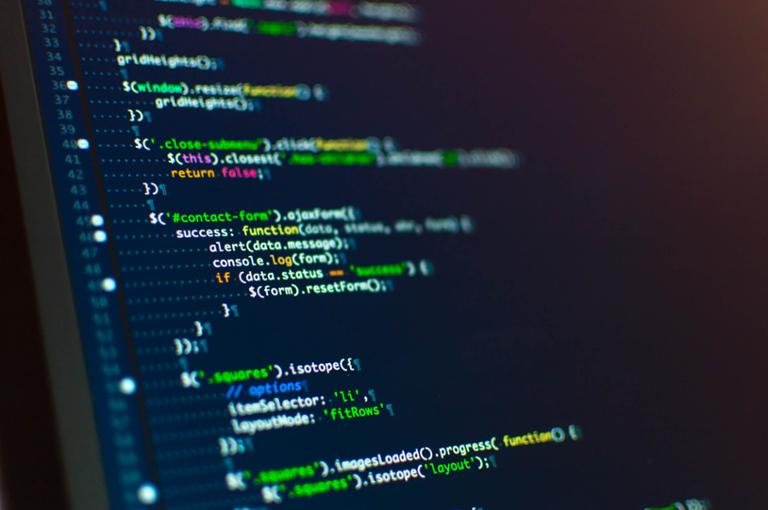 What tools do developers use on a daily basis? According to a recent developer survey by JetBrains (which builds developer tools for individuals and teams; in addition, they’re also responsible for Kotlin, a programming language for Google Android and JVM), developers rely pretty constantly on source-code collaboration tools such as GitHub, GitLab, and BitBucket—some 44 percent of the 5,000 respondents said they used such tools all day long, while another 25 percent did so several times a day. Some 64 percent of respondents also used an IDE such as Eclipse or IntelliJ IDEA on a constant basis, often paired with a lightweight desktop editor along the lines of Sublime Text, Atom, or VS Code. At the same time, developers seem to shun in-cloud editors or IDEs, with 59 percent reporting they never used such products. Another 57 percent said they never used static analysis tools like CodeClimate; some 55 percent never touched code-review tools (i.e., Crucible). Some of these daily workflow decisions seem logical. Developers may be concerned, for example, that in-cloud editors aren’t feature-rich enough for daily use. And in terms of code review tools, developers might be worried that others will pick through and criticize their work (recall what happened to Dash developer Bogdan Popescu when he opened up his code last year—the web, to put it mildly, can prove a really cruel place). With regard to development environment, Windows is in the lead with 57 percent, followed by macOS (49 percent), Unix/Linux (40 percent), and Others (1 percent). Some 21 percent of respondents reported using Windows and Unix/Linux simultaneously. Some 65 percent of the survey’s respondents said they used JavaScript on a regular basis, placing the language well ahead of HTML/CSS (60 percent), Java (47 percent), SQL (42 percent), and Python (32 percent) in terms of usage. Some 26 percent of developers named Java as their “primary” programming language, ahead of JavaScript (16 percent), PHP (12 percent), and Python (10 percent). Newer languages that have attracted a good deal of buzz over the past year aren’t enjoying the same degree of regular use: for example, only 9 percent of respondents coded regularly in Swift, Apple’s new(ish) language for building iOS and macOS apps, and only 8 percent used Go, a language with rapidly escalating popularity according to the monthly TIOBE Index. What portrait does this paint of modern developers? They stick with tried-and-true languages and platforms, and they’re big fans of standard-issue tools, even if many tend to stay away from review and analysis applications (a full third also don’t do any unit testing in their projects).
What tools do developers use on a daily basis? According to a recent developer survey by JetBrains (which builds developer tools for individuals and teams; in addition, they’re also responsible for Kotlin, a programming language for Google Android and JVM), developers rely pretty constantly on source-code collaboration tools such as GitHub, GitLab, and BitBucket—some 44 percent of the 5,000 respondents said they used such tools all day long, while another 25 percent did so several times a day. Some 64 percent of respondents also used an IDE such as Eclipse or IntelliJ IDEA on a constant basis, often paired with a lightweight desktop editor along the lines of Sublime Text, Atom, or VS Code. At the same time, developers seem to shun in-cloud editors or IDEs, with 59 percent reporting they never used such products. Another 57 percent said they never used static analysis tools like CodeClimate; some 55 percent never touched code-review tools (i.e., Crucible). Some of these daily workflow decisions seem logical. Developers may be concerned, for example, that in-cloud editors aren’t feature-rich enough for daily use. And in terms of code review tools, developers might be worried that others will pick through and criticize their work (recall what happened to Dash developer Bogdan Popescu when he opened up his code last year—the web, to put it mildly, can prove a really cruel place). With regard to development environment, Windows is in the lead with 57 percent, followed by macOS (49 percent), Unix/Linux (40 percent), and Others (1 percent). Some 21 percent of respondents reported using Windows and Unix/Linux simultaneously. Some 65 percent of the survey’s respondents said they used JavaScript on a regular basis, placing the language well ahead of HTML/CSS (60 percent), Java (47 percent), SQL (42 percent), and Python (32 percent) in terms of usage. Some 26 percent of developers named Java as their “primary” programming language, ahead of JavaScript (16 percent), PHP (12 percent), and Python (10 percent). Newer languages that have attracted a good deal of buzz over the past year aren’t enjoying the same degree of regular use: for example, only 9 percent of respondents coded regularly in Swift, Apple’s new(ish) language for building iOS and macOS apps, and only 8 percent used Go, a language with rapidly escalating popularity according to the monthly TIOBE Index. What portrait does this paint of modern developers? They stick with tried-and-true languages and platforms, and they’re big fans of standard-issue tools, even if many tend to stay away from review and analysis applications (a full third also don’t do any unit testing in their projects). Which Tools and Languages Do Developers Use?
 What tools do developers use on a daily basis? According to a recent developer survey by JetBrains (which builds developer tools for individuals and teams; in addition, they’re also responsible for Kotlin, a programming language for Google Android and JVM), developers rely pretty constantly on source-code collaboration tools such as GitHub, GitLab, and BitBucket—some 44 percent of the 5,000 respondents said they used such tools all day long, while another 25 percent did so several times a day. Some 64 percent of respondents also used an IDE such as Eclipse or IntelliJ IDEA on a constant basis, often paired with a lightweight desktop editor along the lines of Sublime Text, Atom, or VS Code. At the same time, developers seem to shun in-cloud editors or IDEs, with 59 percent reporting they never used such products. Another 57 percent said they never used static analysis tools like CodeClimate; some 55 percent never touched code-review tools (i.e., Crucible). Some of these daily workflow decisions seem logical. Developers may be concerned, for example, that in-cloud editors aren’t feature-rich enough for daily use. And in terms of code review tools, developers might be worried that others will pick through and criticize their work (recall what happened to Dash developer Bogdan Popescu when he opened up his code last year—the web, to put it mildly, can prove a really cruel place). With regard to development environment, Windows is in the lead with 57 percent, followed by macOS (49 percent), Unix/Linux (40 percent), and Others (1 percent). Some 21 percent of respondents reported using Windows and Unix/Linux simultaneously. Some 65 percent of the survey’s respondents said they used JavaScript on a regular basis, placing the language well ahead of HTML/CSS (60 percent), Java (47 percent), SQL (42 percent), and Python (32 percent) in terms of usage. Some 26 percent of developers named Java as their “primary” programming language, ahead of JavaScript (16 percent), PHP (12 percent), and Python (10 percent). Newer languages that have attracted a good deal of buzz over the past year aren’t enjoying the same degree of regular use: for example, only 9 percent of respondents coded regularly in Swift, Apple’s new(ish) language for building iOS and macOS apps, and only 8 percent used Go, a language with rapidly escalating popularity according to the monthly TIOBE Index. What portrait does this paint of modern developers? They stick with tried-and-true languages and platforms, and they’re big fans of standard-issue tools, even if many tend to stay away from review and analysis applications (a full third also don’t do any unit testing in their projects).
What tools do developers use on a daily basis? According to a recent developer survey by JetBrains (which builds developer tools for individuals and teams; in addition, they’re also responsible for Kotlin, a programming language for Google Android and JVM), developers rely pretty constantly on source-code collaboration tools such as GitHub, GitLab, and BitBucket—some 44 percent of the 5,000 respondents said they used such tools all day long, while another 25 percent did so several times a day. Some 64 percent of respondents also used an IDE such as Eclipse or IntelliJ IDEA on a constant basis, often paired with a lightweight desktop editor along the lines of Sublime Text, Atom, or VS Code. At the same time, developers seem to shun in-cloud editors or IDEs, with 59 percent reporting they never used such products. Another 57 percent said they never used static analysis tools like CodeClimate; some 55 percent never touched code-review tools (i.e., Crucible). Some of these daily workflow decisions seem logical. Developers may be concerned, for example, that in-cloud editors aren’t feature-rich enough for daily use. And in terms of code review tools, developers might be worried that others will pick through and criticize their work (recall what happened to Dash developer Bogdan Popescu when he opened up his code last year—the web, to put it mildly, can prove a really cruel place). With regard to development environment, Windows is in the lead with 57 percent, followed by macOS (49 percent), Unix/Linux (40 percent), and Others (1 percent). Some 21 percent of respondents reported using Windows and Unix/Linux simultaneously. Some 65 percent of the survey’s respondents said they used JavaScript on a regular basis, placing the language well ahead of HTML/CSS (60 percent), Java (47 percent), SQL (42 percent), and Python (32 percent) in terms of usage. Some 26 percent of developers named Java as their “primary” programming language, ahead of JavaScript (16 percent), PHP (12 percent), and Python (10 percent). Newer languages that have attracted a good deal of buzz over the past year aren’t enjoying the same degree of regular use: for example, only 9 percent of respondents coded regularly in Swift, Apple’s new(ish) language for building iOS and macOS apps, and only 8 percent used Go, a language with rapidly escalating popularity according to the monthly TIOBE Index. What portrait does this paint of modern developers? They stick with tried-and-true languages and platforms, and they’re big fans of standard-issue tools, even if many tend to stay away from review and analysis applications (a full third also don’t do any unit testing in their projects). 

